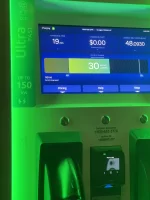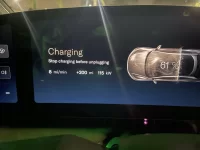I have a 2017 tesla S D 100, original range when new was 335 miles. it’s now turning 140,000 miles driven and I’m lucky to get to 295 miles of indicated range with the home charger . When supercharging , the currently predicted time to 100% is WAY off regarding the time to charge. It will display “45 minutes” but it’s actually needing 1.5 hours to get to 285-290 (from 50-60 starting state of range) so, on real world road trips, I drive for about 3 hours, then charge for 1 and 1 /2 hours then drive for 3 hours. Very frustrating for road trips and I typically drive 1200 to 1700 miles per trip..WHICH is why I own a Lucid AGT With 512(16?) of range.
Anyway, I‘ve got 11,000 miles on the car currently and know that I can charge to at least 510 miles of indicated range. I’ll shoot for a full 100% today on the local EA super charger and see what that shows.
BTW, I live up near Portland Oregon and have NEVER gotten close to 500+ miles of range. Though, to be fair, my car was delivered in October when the temps were in the low to mid 40’s and now, at the end of May, they’re in the 50’s and, we live on a hill.
My guess is we get about 350 miles of real world range on average. In about two weeks I head to Tempe AZ where I’ll be tracking my range (as well as noting my EA charge station experiences). With the warmer Ca and HOT Az temps, I EXPECT much better ranges.
I will also endeavor to keep my speed at 70 mph or below…except in Az where I will try not to exceed 75. (Hard to do in a car that seems to loaf along at 120 mph and at 140mph it whispers “I can go much faster”)


